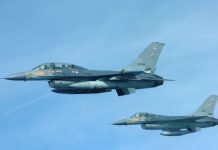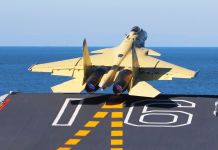Attack on Indian Army by China’s PLA troops on 15th June 2020 in Ladakh region was one of the deadliest clashes between armies India and China in the last 45 years. In a brutal attack on Indian troops, 20 Indian soldiers were killed with an unknown number of Chinese casualties.
Indian Air Force Deploys Su-30 MKI, Apache Helicopters In Forward Bases In Ladakh
With China facing a global backlash on COVID-19, India has started to look towards the West for its support during the border clashes and dealing with Chinese aggression.
“The United States and its allies have tried to persuade India to become a closer military and economic partner in confronting China’s ambitions, painting it as a chance for the world’s largest democracy to counterbalance the largest autocracy,” wrote Maria Abi-Habib, the South Asian correspondent for The New York Times.
Five Reasons Why India-Nepal Border Dispute, Bilateral Ties Went From Bad To Worse?
Meanwhile, Global Times, a mouthpiece for the Chinese Communist Party, published an editorial claiming that the United States had given Indian Prime Minister Narendra Modi’s government false confidence and that it would ultimately abandon India.
According to Habib, India is still well behind China when it comes to military and economic power. She further added that Indian leaders may deliberate over the prospect of an armed escalation on their disputed Himalayan border, where the bloody clashes broke out this week.
How Special Forces Of India, MARCOS & Para SF Compete Against US Navy SEALs?
As reported earlier by EurAsian Times, India and Australia have ramped up their bilateral relations to a Comprehensive Strategic Partnership and have concluded nine arrangements including Mutual Logistics Support for their militaries.
Amid rising Chinese aggression in the Indo Pacific region, New Delhi and Canberra have resolved the Shared Vision for Maritime Cooperation. “India and Australia have an enduring interest in a free, open, inclusive and rules-based Indo-Pacific region.
Indian Air Force Deploys Su-30 MKI, Apache Helicopters In Forward Bases In Ladakh
They have a shared interest in ensuring freedom of navigation and overflight in the Indo-Pacific region, and maintaining open, safe and efficient sea lanes for transportation and communication,” according to the shared vision document.
India is also elected unopposed to a non-permanent seat on the United Nations Security Council. Last month, it won a significant role in the World Health Organization’s executive board which will investigate the origins of Covid-19.
China has shown disapproval of such an inquiry. “India will have to deploy all three — military, economic and political options,” said the president of ORF, Samir Saran. “China is a large and powerful country, and sustained response to their aggression will have to include all of these.”
“The defence of liberalism and democracy and an international open system will play out between India and China,” he said.
With the de-escalation process going on, the military generals from both sides have been meeting along the border. “But villagers in the area and satellite imagery have indicated that both sides are still sending in reinforcements and building up troops,” wrote Habib.
“While India’s military is one of the world’s largest, it has failed to modernize and stay competitive. This year, India announced a military budget of nearly $74 billion, compared with Beijing’s $178 billion. In India’s case, much of that spending is going to pay pensions,” she added.
Many countries including the US have accused the Chinese telecommunications giant, Huawei of helping the Chinese government in cyberespionage and have blocked them for their 5G services. The author states that the diplomats expect India to prevent Huawei from entering its market to build a 5G wireless network.
“Although India’s potential buying power gives it one way to slap at China, it has nowhere near the spending and lending capacity that China has used to increase its global influence,” she added.
Meanwhile, Nepal’s government have passed the resolution in its Parliament to approve a new political map which includes the part of the territory that India claims. According to Army Chief General M.M. Naravane, such a move might come at the behest of China.
China is actively building infrastructure in Pakistan. “With every project built, China is making it harder for India to hold on to its territorial claims,” observed Habib.
“China took possession of a port in Sri Lanka after that country could not pay its debt to Beijing. Some Indian officials fear that China could militarize the port, which Sri Lanka denies,” she added. The author concludes by quoting the former Indian foreign secretary, Vijay Gokhle, that countries could no longer ignore Beijing’s transgressions and must choose between the United States and China.




